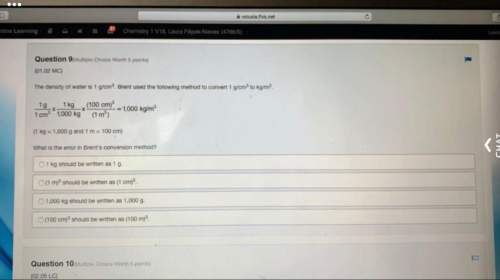
Chemistry, 05.05.2020 09:47 brainBoy480
Fusion and fission reactions are both nuclear reactions that can be used to produce energy. However, while fission reactions are observed as a natural decay route for some nuclei on Earth, fusion is not seen under typical ambient planetary conditions. More extreme conditions, like are present in stars, are typically necessary for fusion to occur on a large scale.
Which of the answers below correctly describes the reasoning for this difference?
A. Both fusion and fission reactions are initiated by neutron addition to the nuclei involved in the reaction. However, fusion reactions, unlike fission reactions, do not produce large amounts of extra neutrons to propagate the chain reaction needed to sustain a reaction at a high rate.
B. Both fusion and fission reactions require nuclear collisions. Fusion reactions involve smaller nuclei which collide less frequently with each other, causing a slower reaction. Fission reactions involve larger nuclei, making collisions more frequent, leading to faster reaction rates.
C. Fusion reactions result in less energy released as heat than is seen in fission reactions. Because less heat is released there is less energy present in the reactants to overcome the large activation energy for these reactions. Fission reactions also have a large activation barrier, but the heat produced by these reactions is much greater, giving the nuclei the energy they need to complete the reaction.
D. Fusion reactions have a larger barrier to reaction due to the repulsion forces required for two nuclei to come together. Because the nuclei are both positively charged, the repulsive force between the two has to be overcome for fusion to occur. Fission reactions do not involve nuclear collisions and therefore have a lower barrier to reaction.
E. The binding energy per nucleon is much lower, on average, for atoms involved in fusion reactions. This means that the reactions are less energetically favorable, as binding energy per nucleon is a measure of stability. Because there is much less energetic driving force, the reaction rate is much slower overall, meaning that it is more difficult to observe under ambient conditions.

Answers: 1


Another question on Chemistry

Chemistry, 21.06.2019 12:40
How can you increase the ability of a gas to dissolve in a liquids?
Answers: 1

Chemistry, 22.06.2019 09:10
How have the greenhouse gasses increased from the year 2000 to 2018
Answers: 2


Chemistry, 22.06.2019 17:30
Aroller coaster is traveling at 13 mi./s when you purchase a hill that is 400 m long and down the hill exonerate at 4.0 m/s squared what is the final velocity of the posterior found your answer to the nearest number
Answers: 1
You know the right answer?
Fusion and fission reactions are both nuclear reactions that can be used to produce energy. However,...
Questions

Chemistry, 09.10.2020 01:01


Mathematics, 09.10.2020 01:01


Mathematics, 09.10.2020 01:01

Spanish, 09.10.2020 01:01

Chemistry, 09.10.2020 01:01

History, 09.10.2020 01:01

History, 09.10.2020 01:01

History, 09.10.2020 01:01

English, 09.10.2020 01:01

Computers and Technology, 09.10.2020 01:01

Mathematics, 09.10.2020 01:01

English, 09.10.2020 01:01





Mathematics, 09.10.2020 01:01

Mathematics, 09.10.2020 01:01




